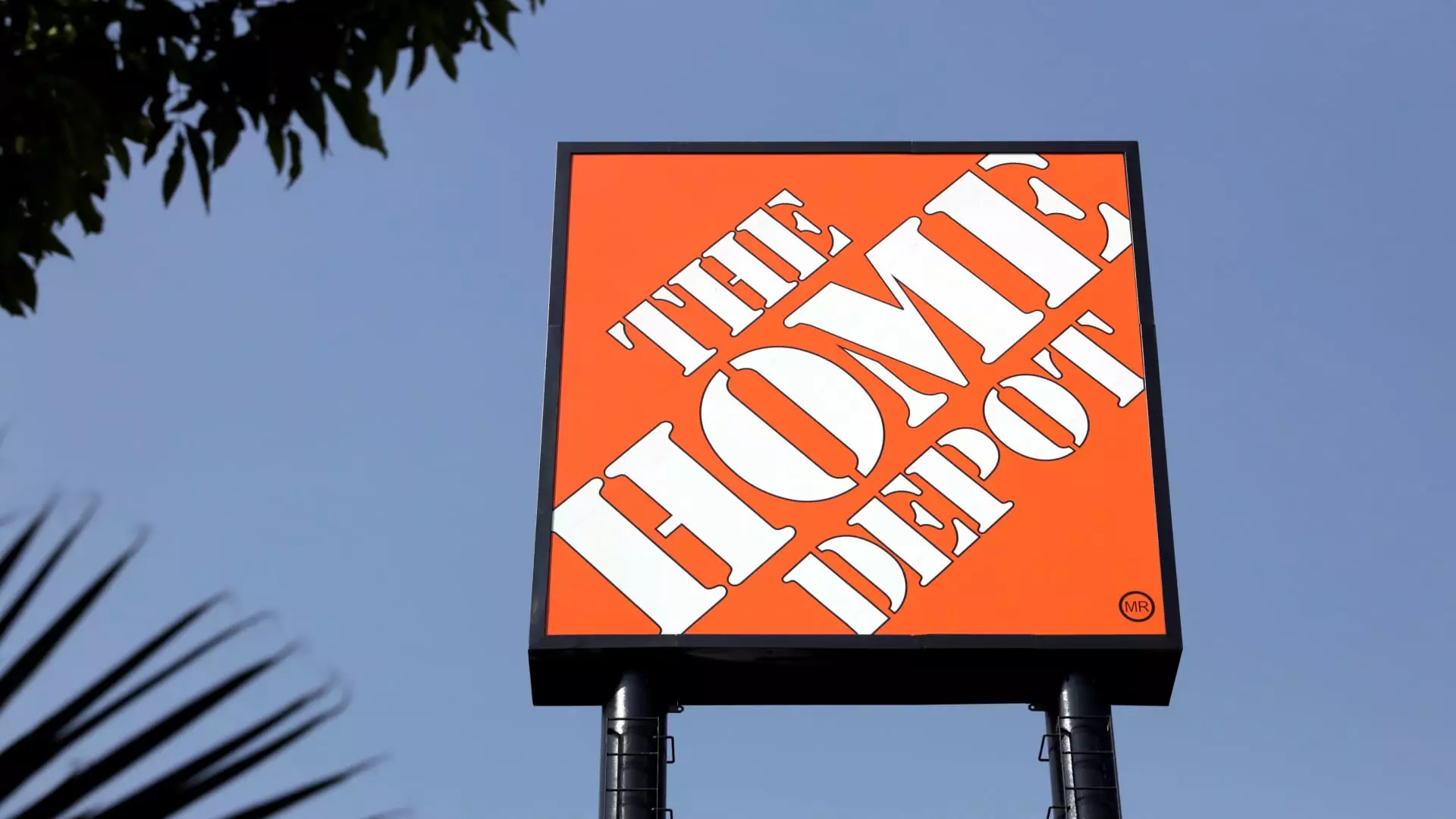Home Depot has reported a notable increase in quarterly sales, attributed to a combination of strategic acquisitions and external factors such as improving weather and heightened demand for home improvement supplies. Recently, the company unveiled a 6% rise in sales compared to the previous year, driven substantially by its acquisition of SRS Distribution, a firm specializing in supplies for roofing, landscaping, and pools. This article delves into the intricacies of Home Depot’s current financial situation, the challenges it faces, and its overall market strategy, highlighting how the retailer aims to navigate a fluctuating economic landscape.
Despite the bright spot of rising sales, Home Depot is not immune to broader economic challenges. The company has adjusted its sales projections, revising its full-year outlook to anticipate a 4% rise in total sales instead of the previously estimated 2.5% to 3.5%. However, this optimistic forecast is layered with the complications of economic uncertainty that continue to loom over consumers. Chief Financial Officer Richard McPhail pointed out that, while there is a latent demand for home improvement projects, many consumers are hesitating to make significant purchases due to concerns about rising mortgage rates and overall financial stability.
With a high percentage of Home Depot’s customer base being homeowners, the company finds itself at the crossroads of a paradox. While financially stable, many customers are choosing to delay their home improvement projects, hoping for more favorable lending conditions. This delay underlines a critical observation; the retail giant has experienced significant pent-up demand that remains dormant until the right economic conditions materialize.
Examining comparable sales data for Home Depot sheds light on its market position over the past quarter. The company reported a comparable sales decrease of 1.3%, which, while disappointing, was better than the 3.3% drop predicted by analysts. This represents the eighth consecutive quarter of declining comparable sales, a troubling trend that has not significantly impacted Home Depot’s stock performance, which has seen an impressive rise of approximately 18% this fiscal year. The juxtaposition of strong stock performance amid declining comparable sales raises questions about investor sentiment and the broader implications for the retailer’s future trajectory.
The notable metrics also reveal an ongoing trend within the housing market affecting Home Depot’s customer base. With more significant economic strains from elevated interest rates resulting in slower housing turnover, homeowners are less inclined to launch discretionary projects. The data suggests that consumers are holding back on projects that would typically stimulate sales, pushing Home Depot to consider strategic adaptations to capture this segmented market effectively.
Hurricane season typically presents both challenges and opportunities for retailers in the home improvement sector. This past quarter, Home Depot benefitted from a boost in sales due to weather-related factors, with hurricane preparation items contributing notably to sales growth. During this period, customers purchased essential items for coping with adverse conditions, such as generators and building materials for repairs. Moreover, the retailer experienced a surge in seasonal purchases, capitalizing on warmer weather that extended summer activities—higher sales of outdoor products, like grills and paints, are a direct result of this climatic shift.
Additionally, the forthcoming holiday season has positioned Home Depot to leverage its diverse product offerings effectively. The trend towards elaborate home decorations, especially after the virality of its Halloween merchandise, signals a crucial opportunity for increased sales in seasonal decor and home accessories. It’s an acknowledgment that Home Depot strategically capitalizes on consumer celebrations, potentially offsetting some of the decline in core home improvement sales.
Looking ahead, Home Depot faces both daunting challenges and lucrative opportunities. While economic factors have been unfavorable, such as rising inflation and potential price pressures from imported goods and tariffs, the company is optimistic about its strategic acquisitions. The acquisition of SRS Distribution not only broadens its market outreach but also invites further consideration of how to engage with professional buyers in addition to its vast DIY customer base.
Further complicating the economic landscape is the Federal Reserve’s recent interest rate adjustments. While rate cuts may initially seem favorable for consumers, rising home prices continue to impede housing turnover. McPhail’s comments reflect a cautious optimism that the worst may be behind Home Depot in terms of housing market challenges, but significant uncertainty persists.
Overall, Home Depot’s ability to adapt to market shifts while leveraging acquisitions and seasonal trends shows resilience. The relationship between consumer confidence and economic conditions will undoubtedly dictate the company’s short-term performance. Going forward, maintaining an innovative and responsive business model will be crucial for unlocking the potential pent-up demand that exists in the market. As the retailer strategizes for uncertain times, its ability to harness opportunities across diverse segments will ultimately determine its success in the competitive home improvement landscape.

